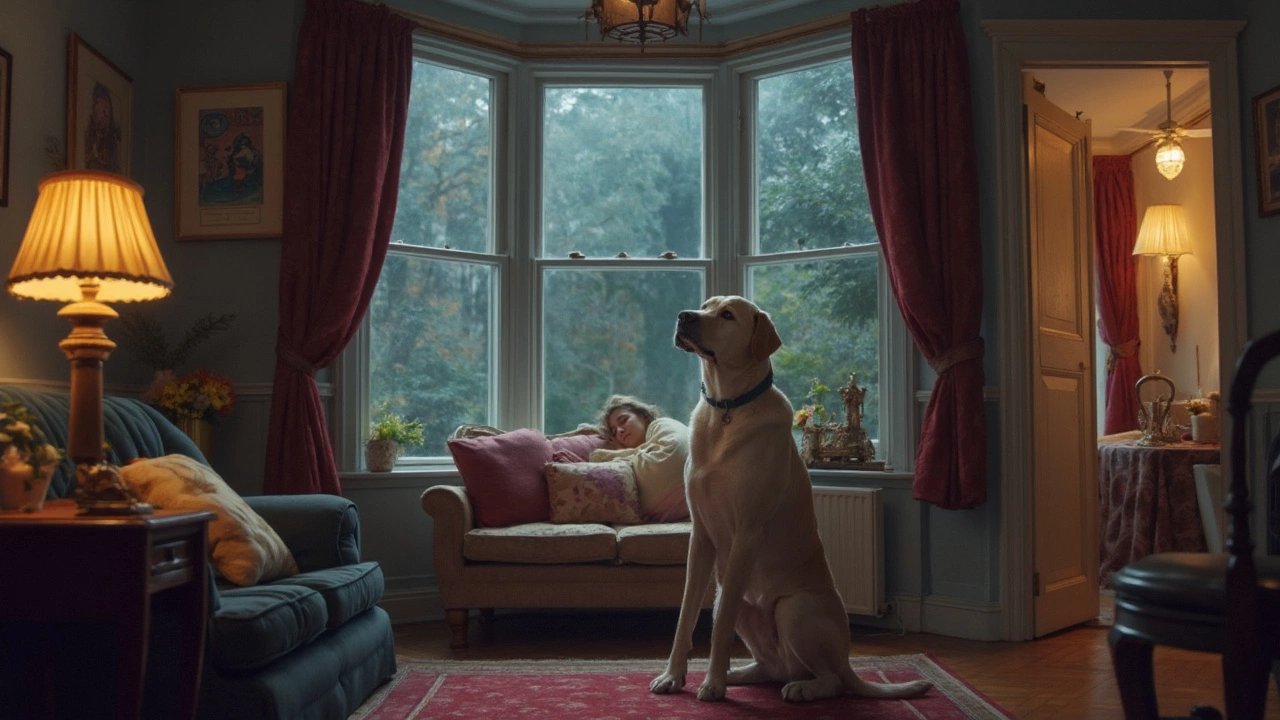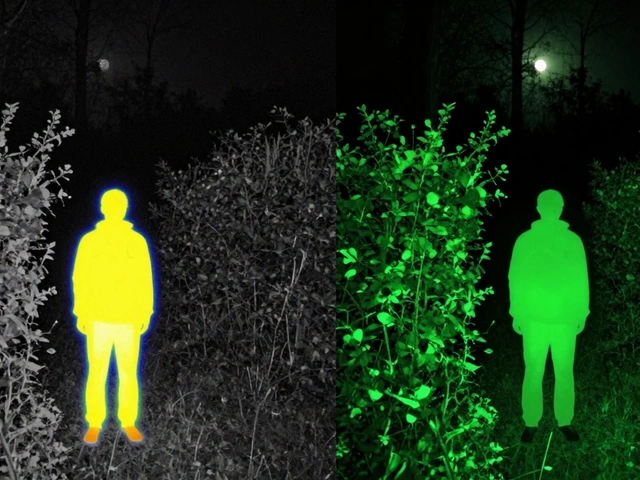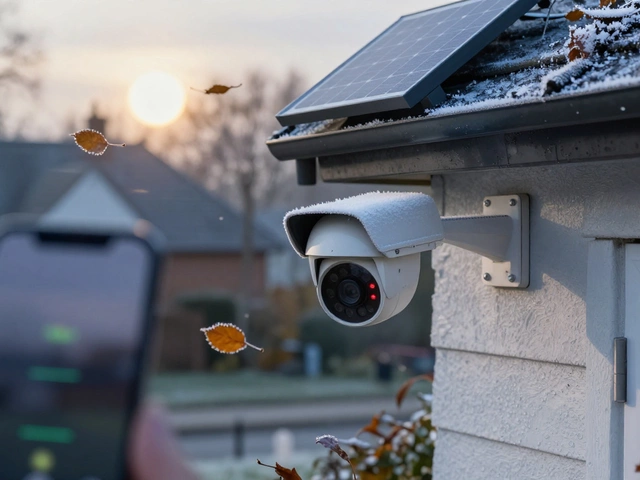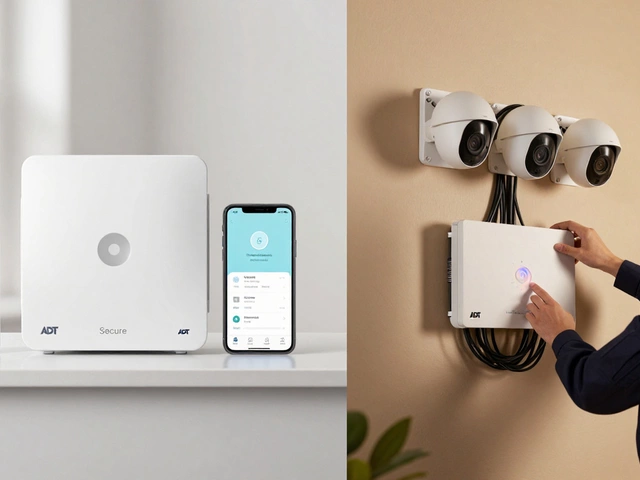Imagine you’re lying in bed, half-asleep, when your dog lifts his head and stares at the door. That little spark of anxiety flickers: would your dog know if an intruder crept inside? Turns out, there’s a lot more to the story than just barking at shadows or chasing squirrels. Canine instincts, patterns, and a bunch of fascinating science say dogs might just be the unsung heroes of home security.
What Makes a Dog’s Senses So Sharp?
Forget night-vision cameras for a second—dogs come hardwired with some crazy skills we humans can only dream of. The fact is, a dog’s nose isn’t just good, it’s almost superhuman. Inside those snouts are about 220 million scent receptors, compared to a measly five million in humans. It’s like comparing a flip phone to the latest smartphone but on a much bigger scale. That means your dog can pick up smells days, even weeks old, and tell if the person behind that scent is friend, stranger, or squirrel-chaser from three blocks over.
Let’s talk about hearing. Dogs catch sounds up to 65,000 Hz—basically, noises so high-pitched or faint, you’d never notice them. A gently turning doorknob in the middle of the night? Your dog probably hears it before you even dream about it. That’s why Fido sometimes jumps up when you’re alone and watching TV, ears in “radar mode.”
Scientists have even measured the parts of a dog’s nose dedicated purely to analyzing scents. In studies, dogs were able to detect scent concentrations as low as one part per trillion—think about a drop of perfume in 20 Olympic pools. No wonder dogs can find hidden drugs at airports, missing hikers in the woods, or a slice of pizza buried in a backpack.
Their vision isn’t as flawless as their noses, but dogs are especially tuned to detect movement. That means even if someone slips in silently, a good watchdog will spot the smallest shadow twitch across the floor, even in the half-light.
To show how powerful their senses really are, check out this quick stats table:
| SENSE | DOG ABILITY | HUMAN ABILITY |
|---|---|---|
| Smell | Up to 220 million scent receptors | Approx. 5 million scent receptors |
| Hearing | 15 Hz – 65,000 Hz range | 20 Hz – 20,000 Hz range |
| Vision | Motion detection, good at dusk/dawn | Color vision, better acuity |
All these together mean your dog’s well-equipped to spot subtle signs no camera or sensor ever could. But that isn’t the whole story—how they react is another puzzle altogether.
How Dogs React to Strangers: More Than Just Barking
We all picture the loyal pup dashing to the door, barking his head off at the first sniff of a stranger. But real life is messier. Some dogs go wild, no doubt—they bark, growl, and pace. Others freeze, sniff quietly, or run and hide. Breed, personality, training, and past experiences shape these behaviors big time.
Take German Shepherds or Dobermans, for example. They’re literally bred to notice and challenge anything unusual at home. Tiny lapdogs? They might yap at a leaf or sleep through a break-in. Rescues that survived rough treatment might freeze or slink away, even if they’ve got the sharpest noses in town.
Watch your dog’s ‘intruder warning signs’ next time someone knocks. Ears perk up, tail gets stiff, maybe a low rumble. Dogs also “air sniff”—lifting their noses and scenting the breeze if something feels off. Some stalk to the source, all muscles tense. Others stand between you and the door, quietly watching. That’s not nothing—it’s a kind of canine risk assessment you’ll see if you look for it.
One lesser-known fact: dogs often react less to how someone looks, and more to how someone acts or smells. If a neighbor sneaks in for a surprise birthday, your dog might panic unless the smell or silhouette is super familiar. But if it’s a stranger, especially one acting nervous or odd, the reaction ramps up. Scientists say dogs actually read human body language a lot like we do—they notice shifty movement, strange postures, even heart rates, believe it or not.
Don’t forget about body language from the dog’s end. Signs like hackles raised, showing teeth, or a stiff gait are serious red flags. Subtle stuff like pacing, whining, or excessive drooling can show nerves or suspicion even if there’s no barking at all.
If you have multiple dogs, watch their group dynamic. Sometimes one will signal the other, and you’ll see a quiet build-up before any sound’s made. It’s worth noting that lots of real-life home intrusion stories mention pets alerting owners with body blocks, pressing noses against hands, or just refusing to settle. These are natural watchdog moves, even if your dog isn’t a security pro.

Is Every Dog a Good Guard Dog?
Not every animal who wags their tail at strangers is cut out for security work. There’s a myth that all dogs make good guards—wrong. Genetics, training, and confidence play huge roles. Dozens of breeds, from big to tiny, can sound an alarm, but you’ll see big differences in consistency and courage.
Some pups are just born sentinels. Look at breeds like Rottweilers, Belgian Malinois, or Anatolian Shepherds. They’ve been trusted with livestock, property, and people for centuries thanks to their protective instincts. A Labrador, on the other hand, might wag at an intruder if treats are involved. But even that easygoing Lab can sometimes surprise you—a dog’s loyalty can override its friendliness in the right situation.
There are a few hard facts that explain this. Puppies imprinted on a strong territory or bonded tightly to their pack (that’s you!) are far more likely to react. Socialization matters too. If your dog’s never been exposed to guests or unfamiliar settings, she might just panic—not bark—when something’s amiss. And dogs adapt. A shy puppy can become a fearless barker by watching older canine ‘mentors’ in the house.
Here’s a quick rundown of classic watchdog breeds and a few surprise stand-outs:
- German Shepherd: Top-tier detection, unwavering loyalty, and serious vocal cords
- Doberman Pinscher: Fast, fearless, and usually quick to confront
- Boxer: Playful but keen, with strong territory instincts
- Standard Schnauzer: Compact but sharp as a tack, known for “bark first, ask questions later”
- Chihuahua: Yes, really—tiny watchdogs, big sound, intense loyalty
Don’t count out mutts, either. Rescue dogs with an uncertain background often have heightened survival instincts. The real key is not breed, but bond—your dog’s urge to protect usually matches his relationship with you and his environment.
If you ever want to strengthen your dog’s guard instincts, basic boundary training helps. Teach your dog to alert you with a specific sound or action, like sitting at the door or touching your hand. Professional trainers can also help shape the “quiet alert” behaviors that get attention without annoying the whole neighborhood. Remember though, a dog’s primary job is love—they don’t all have to play security guard 24/7.
Upgrading Your Home Security With Your Dog
Dogs are an incredible supplement to any home security plan, but they shouldn’t be the only defense against threats. Still, there are ways to bring out the best in your canine sentry. The more you involve your dog in daily routines, the sharper and more confident he’ll be. Walks on varied streets, regular meetups with friends, and exposing your pup to guests or unusual sights all strengthen her ‘stranger radar.’
Routine is key. Dogs spot the tiniest changes in their environment, so keeping a regular feed and walk schedule helps her notice what doesn’t belong. If there’s a strange car in the driveway or a window open that shouldn’t be, your dog’s the first to pick it up—even before your morning coffee kicks in.
Security experts often recommend mixing dog alertness with tech—smart alarms, secure locks, and motion sensors. The best results happen when your dog can point the way and technology does the confirming. For example, some families use smart doorbells that let dogs hear visitors’ voices or footsteps before the bell even rings. Pair that with guard training and you’ve got a full home guardian setup.
Here’s a hit-list of practical tips for using your dog as a security partner:
- Make sure your dog knows every room. Help them learn the whole floor plan so nothing surprises them.
- Practice ‘alert’ commands. Teach your pup to come get you, bark once, or point to specific exits.
- Introduce your dog to trusted neighbors and friends so he learns who’s safe and who’s not.
- Reinforce good alert behavior with praise and treats. Never punish a real warning—false alarms are better than missed threats.
- Know your pet’s ‘boredom triggers’ so he doesn’t bark at every squirrel but responds to genuine changes.
If your dog gets nervous or overwhelmed by new people, don’t push it. Not every pet is comfortable with guard work, and some just want to snuggle under the covers at the first sign of trouble. Make sure your dog’s comfort comes first; forced fear does nothing but harm.

Real Stories and Interesting Facts About Canine Intruder Detection
There’s no shortage of stories about dogs warning families of danger. A famous example is a rescue mutt in Oklahoma who woke his owners up just as a burglar tried to jimmy the back door. Another is the case of a timid Beagle in Boston who, despite never barking at strangers before, growled and pawed at his owner’s leg until she called 911—turns out, the ‘strange noises’ she wrote off as nothing were really someone forcing open a window.
Dogs often respond strongest to the intent, not just the sight or sound, of an intruder. A small pilot study from the University of Lincoln found that most dogs react with subtle alarms (staring, stiff postures, following you closely) in simulated break-in scenarios, but only about a third barked right away. That means while Hollywood shows dogs going ballistic at every burglar, your own pup might simply stick like glue to you, block an exit, or act oddly until you pay attention.
Here’s a fun fact: According to data from the U.S. Department of Justice, homes with dogs are far less likely to be targets for burglary—simply having a dog, big or small, more than doubles your odds of an intruder skipping your place in favor of a quieter target.
Dogs that have lived through actual emergencies (fires, storms, or past break-ins) are even quicker to sense a threat. Trauma can sharpen their instincts in unpredictable ways, so don’t be surprised if your sweet, quiet pup goes full watchdog if he ever perceives real danger.
But it goes both ways. Dogs will sometimes bark at nothing or react to harmless noise. That’s normal—nobody’s perfect, not even your furry alarm system. Learning your dog’s personal “alarm code” is part of becoming a team. Notice which barks signal “stranger at the door” versus “cat outside” and respond to the serious ones with calm attention. The more you show your dog you believe his warnings, the more accurate those signals become.
The bond between you and your dog is the most important tool in home security. When your dog trusts you, feels safe, and knows his job (even if that’s just curling up at your feet), he’s far more likely to go above and beyond when it matters. Keep him trained, keep him loved, and you’ll never doubt your own personal home sentinel—even if he does get a little too excited when the pizza guy shows up.






